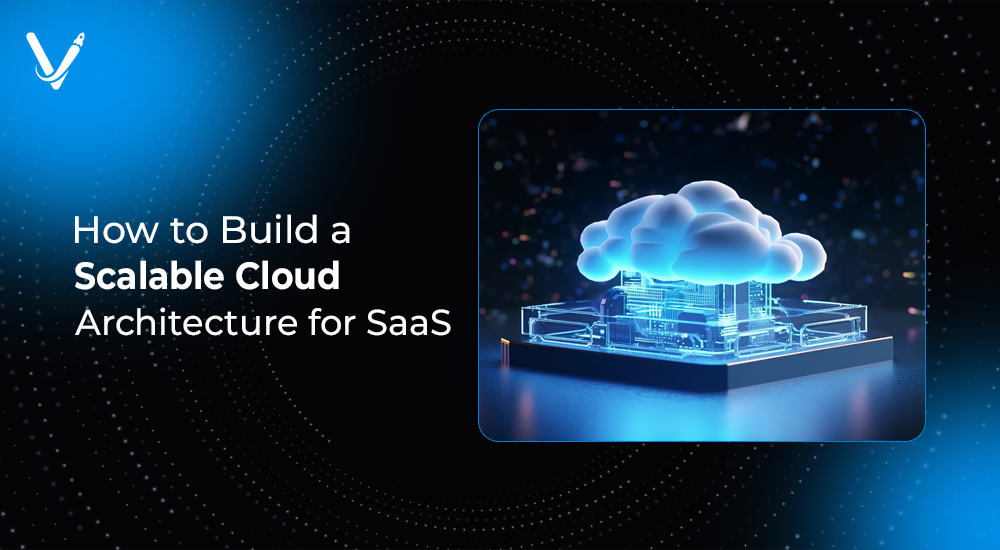How to Build a Scalable Cloud Architecture for SaaS


- Jun 15, 2025
In a digital-first world, Software-as-a-Service (SaaS) is the engine powering everything from productivity tools to data analytics platforms. As user expectations grow and businesses scale globally, the underlying cloud architecture becomes critical to ensuring performance, uptime, and security. A poorly designed architecture can lead to costly downtimes, sluggish performance, and scalability bottlenecks.
This guide explores how to build a scalable, resilient, and cost-efficient cloud architecture for SaaS platforms, backed by industry best practices, real-world case studies, and step-by-step recommendations. If you're planning to launch or scale a SaaS product, this blog will help you avoid costly architectural pitfalls while ensuring your platform remains agile and competitive.
SaaS architecture is fundamentally different from traditional software deployment. It must cater to multiple tenants, handle dynamic workloads, and guarantee high availability. Here are some of the unique considerations:
Multi-Tenancy: SaaS applications often serve multiple customers (tenants) on shared infrastructure. This adds complexity around data isolation, resource sharing, and access control.
Elastic Workloads: Demand can spike unexpectedly due to user growth, marketing events, or time-sensitive usage patterns.
High Availability Requirements: Downtime is unacceptable in most SaaS models. Cloud architecture must be resilient to failures and support auto-recovery.
Security and Compliance: SaaS platforms handle sensitive customer data. Regulatory compliance (GDPR, HIPAA, etc.) and data protection are non-negotiable.
Before diving into components, it’s important to understand the foundational principles that drive scalability:
Microservices Architecture: Instead of a monolithic approach, break down your application into independent, loosely coupled services. Each microservice handles a specific functionality (e.g., user auth, billing, reporting).
Statelessness: Design services to be stateless wherever possible so they can scale horizontally without sharing session data across nodes.
Auto-scaling: Infrastructure should automatically scale up or down based on demand, preventing performance degradation during peak usage.
Infrastructure as Code (IaC): Use tools like Terraform or AWS CloudFormation to provision and manage infrastructure reliably across environments.
Decoupled Services with Queues: Use messaging systems like Amazon SQS or Apache Kafka to decouple services, improve performance, and ensure fault tolerance.
Choosing a cloud provider (AWS, Google Cloud, Azure) is a strategic decision. Consider pricing models, global data center availability, ecosystem maturity, and existing skillsets on your team.
Recommended Cloud Services for SaaS:
Real-World Insight:
Slack, a leading SaaS product, runs a multi-cloud architecture and uses AWS services to deliver fast, reliable collaboration features across geographies.
There are three main models for multi-tenancy:
1. Shared Database, Shared Schema: Easiest to manage but limits customization. Requires strict data isolation mechanisms at the application level.
2. Shared Database, Separate Schema: Better data isolation and flexibility. Slightly more complex to manage.
3. Separate Databases per Tenant: Maximum isolation and control. Preferred for high-paying customers or regulated industries.
Best Practice:
Start with shared schema and evolve toward separate schemas or databases as your user base grows and differentiates.
Key Considerations:
Scalability must be baked into every layer of the stack.
Frontend (Web/Mobile):
Use CDNs like Cloudflare or AWS CloudFront to serve assets faster and reduce origin server load.
API Layer:
Deploy stateless REST or GraphQL APIs. Use load balancers and auto-scaling groups for traffic management.
Business Logic Layer:
Design microservices to scale independently. Use containers (Docker) or serverless functions (AWS Lambda) for modularity.
Database Layer:
Caching Layer:
Asynchronous Processing:
Security can never be an afterthought. SaaS platforms must enforce robust security at all levels:
Authentication & Authorization:
Data Protection:
Network Security:
Compliance & Auditing:
Case Study:
Dropbox uses multiple layers of security, including file-level encryption, audit trails, and user access controls, to support its SaaS business model.
Scaling is meaningless if your costs spiral out of control. SaaS companies must optimize cloud spending without compromising performance.
Tips for Cost Efficiency:
Monitoring Tools:
Without visibility, scaling efforts are guesswork.
Observability Stack:
SLA Management:
Define Service Level Objectives (SLOs) and use monitoring to proactively identify breaches.
Frequent deployments are common in SaaS. CI/CD helps automate testing and rollout with minimal human intervention.
Steps to Build a SaaS CI/CD Pipeline:
Key Tools:
SaaS is global by nature. Performance across geographies must be consistent.
Global Strategies:
Example:
Netflix uses AWS across multiple continents to serve content with minimal delay to over 200 million users.
What happens when something goes wrong? Plan for it.
Key DR Strategies:
Availability Design Patterns:
Scaling should be tested before your users do it for you.
Testing Approaches:
Toolkits:
Case Study: Zoom
Case Study: Shopify
A scalable cloud architecture for SaaS is a strategic advantage. It ensures seamless user experiences, adapts to demand surges, and protects customer data—all while controlling costs. As a SaaS founder or architect, your goal should be to design for resilience, elasticity, and observability right from day one.
Key Takeaways:
Ready to scale your SaaS business with expert cloud architecture design? At Vasundhara Infotech, we specialize in building scalable, secure, and cost-efficient SaaS platforms powered by modern cloud technologies. Whether you're starting fresh or optimizing an existing system, our team is here to help.
Let’s build the future of SaaS together. Contact us today to schedule a free consultation!
Copyright © 2025 Vasundhara Infotech. All Rights Reserved.
